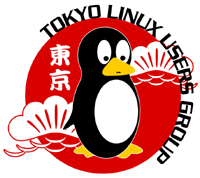Introduction
As you will have noted from our other QND Guides, they start with asking if you have the particular program, and have you start by typing which
As each distribution has its own way of installing software, this guide is intended as a pointer to installing software in the distributions with which we are familiar.
Distributions
Red Hat Linux
Red Hat Linux developed the now common RPM system. (RPM actually stands for Red Hat Package Manager.) Most of the software mentioned in these QND guides will be found on one of the CDs. A typical Red Hat distribution consists of 3 or 4 CDs. Most software will have to be installed as the root user.
So, insert the CD. (Unless mentioned otherwise in a QND guide, you might as well start with the first one.)
Login as root, or do a
su - rootThen,
mount /dev/cdrom
cd /mnt/cdrom/RedHat/RPMS
ls <program_name*>
For example, if you were searching for fetchmail, you would type, after cd'ing to the RPMS directory
ls fetchmail*
If it's not on the first CD that you tried then
cd
umount /dev/cdrom
Then repeat the procedure with the next CD. Once you've found the program, which will be the program name with a version number, for example fetchmail-5.9.11.rpm then
rpm -Uvh fetchmail-5.9.11.rpm
You'll see some information as it's being installed. When done, umount and eject the CDROM as above.
(We'll continue to use fetchmail as our example package)
Mandrake Linux
Mandrake also uses the RPM format. The procedure is actually, at least last time any of us tried it, identical since Mandrake still keeps its RPMS in a folder called RedHat/RPMS.
Gentoo Linux
Gentoo uses the portage system. Again packages usually have to be installed as root. To find out if it's available in portage
emerge -s fetchmail
You'll get a result like
* net-mail/fetchmail
Latest version Available: 5.9.11
It will usually also give the homepage and a brief description.
So, assuming the package is available in portage then
emerge fetchmail
(You may first want to do
emerge -pv fetchmail
to see what other packages may be installed as dependencies.)
Debian
Debian's apt system is well known for its ease of use. To search for a program one types
apt-cache search fetchmail
To install it, one usually only need type
apt-get install fetchmail
ArchLinux
Arch Linux is a relatively little-known distro, though it deserves more notice. It is one of the easiest, as far as installing software. To see if a package is available do
pacman -Ss fetchmail
You will then find the name of the package. Usually, when installing, you don't need the version number and can simply then do
pacman -Sy fetchmail
You will then see it download and install fetchmail.
FreeBSD
FreeBSD uses the ports system. Most software mentioned in these guides will be available in their ports. So,
cd /usr/ports
whereis fetchmail
In this case you'll get the answer of /usr/ports/mail/fetchmail.
Another, probably better way to do it is
make search name=fetchmail
cd /usr/ports/mail/fetchmail
make install
Again this must be done as root.
NetBSD
NetBSD is almost identical to FreeBSD save that rather than /usr/ports it is in /usr/pkgsrc. So
cd /usr/pkgsrc/mail/fetchmail; make install
The QND guides give the link to a program's home page. If the program is not available with your distribution, the home page will almost always have information about getting the program, often having the source code and/or rpms available.
If you're not familiar with installing source code then fear not--we also have a QND guide for it.
Continuing
Now repeat step one of the QND guide that you were reading. For example, if it was the fetchmail guide then
which fetchmail
If Step 1 still fails, then something subtle is probably wrong. Try emailing your local Linux Users Group or other Linux mailing list to which you subscribe. One good one for beginners is the linux@yahoogroups.com list. (We know that you are member of one or the other) something like “I am trying to install fetchmail on (your distribution, version included). I am using the following method (include the commands that you ran to install it). However, I run 'which fetchmail' and it isn't found. Does anyone have any idea what I'm doing wrong? Thanks in advance.”
Now that you're done with this, you can go back to the QND guide that you were reading and continue with what is usually step 3.
Installing_Software


 /
/